How to grow cucumbers – a simple step-by-step guide
Follow this beginner's guide on how to grow cucumbers for your own homegrown harvest of this salad essential
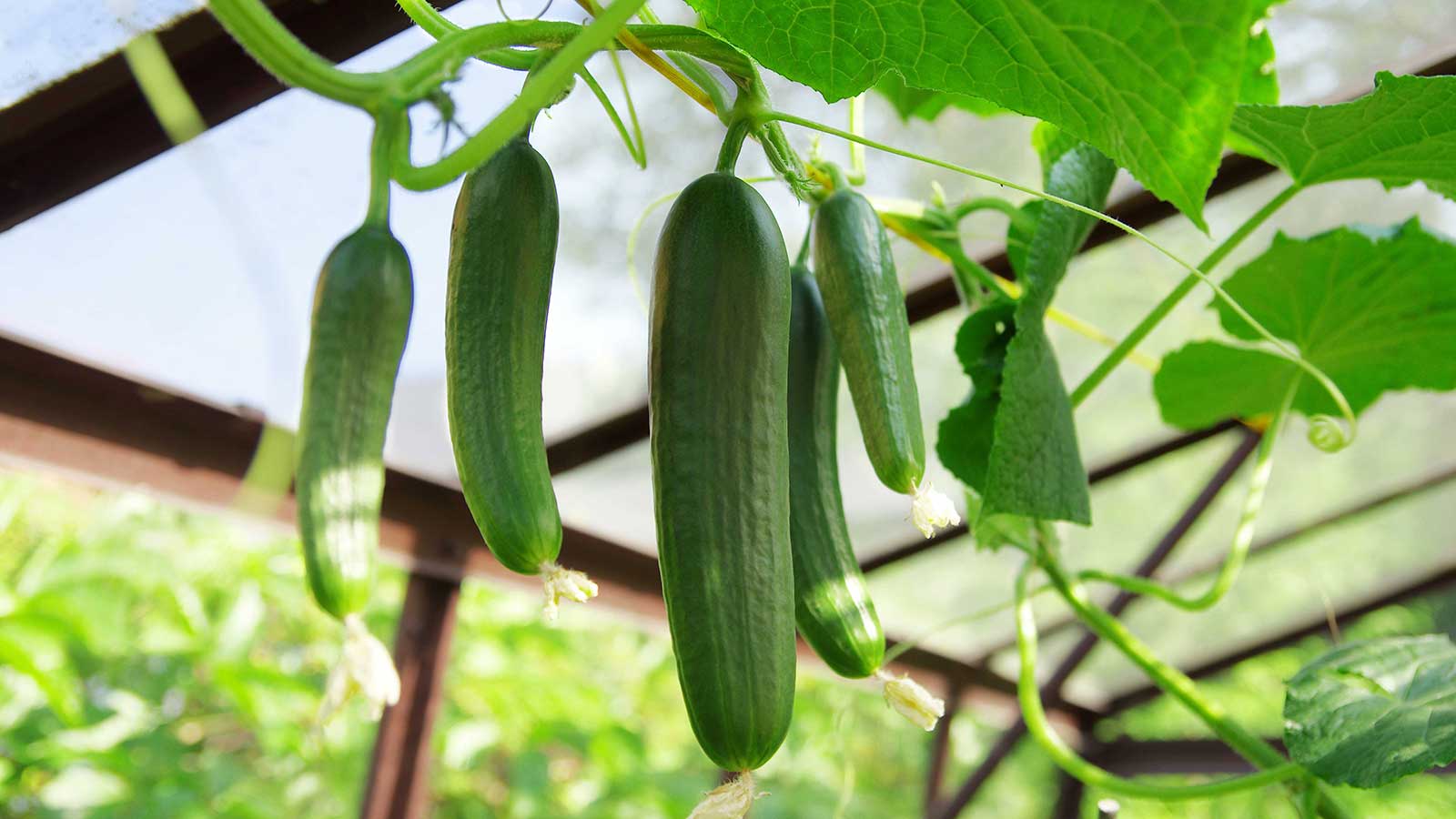

Learning how to grow cucumbers can be both fun and rewarding. Not only will you enjoy picking and eating a delicious homegrown harvest of this popular and versatile veg, but it's a cost-effective way of replenishing your salad tray, and you won't be dependent on dwindling supermarket supplies.
Whether you choose to grow cucumbers vertically outdoors, indoors in a greenhouse, or in a sunny conservatory, they're an easy choice for beginners.
You can sow cucumbers at the same time as other easy-to-grow, warmth-loving vegetables, such as if you're growing tomatoes in pots or mastering how to grow peppers.
How to grow cucumbers – indoors or outdoors
Cucumbers like warm conditions, so growing them under glass as a greenhouse idea, or by a sunny window in a conservatory or garden room, is a good option.
That said, if you don't have a greenhouse or a suitable spot indoors, you can still learn how to grow cucumbers outdoors during the warmer summer weather. There are outdoor cucumber varieties that can be grown in pots in a sheltered spot as a courtyard garden idea, or, as they are vine plants and grow vertically so won't take up much floor space, even in a corner of a small balcony garden.
So when should you start on your cucumber-growing journey?
'Cucumbers prefer warmer climates with a minimum temperature of approximately 15°C,' advises Daniel Carruthers, director of sales at Cultivar Greenhouses. 'If you have a greenhouse, a heated propagator, or even a sunny south-facing windowsill, you can sow your seeds from March onwards. If you don’t have somewhere warm indoors to sow your seeds, you’re better off waiting until the last frost has cleared, which is usually late May.'
Sign up to our newsletter for style inspiration, real homes, project and garden advice and shopping know-how
What you will need
- A seed tray with cells like the Verve Grey Seed Tray from B&Q, or small pots
- Free-draining compost, such as the Levington Peat-Free Seed Compost from Amazon
- Cucumber seeds, like this selection from Suttons
- A heated propagator (optional) or plastic bag
- Plant supports, like the Folding A-Frame Cucumber Trellis from Primrose
- Fruit and vegetable fertiliser like the Miracle-Gro Performance Organics Fruit & Veg Concentrate Plant Food from Amazon
How to choose cucumber seeds
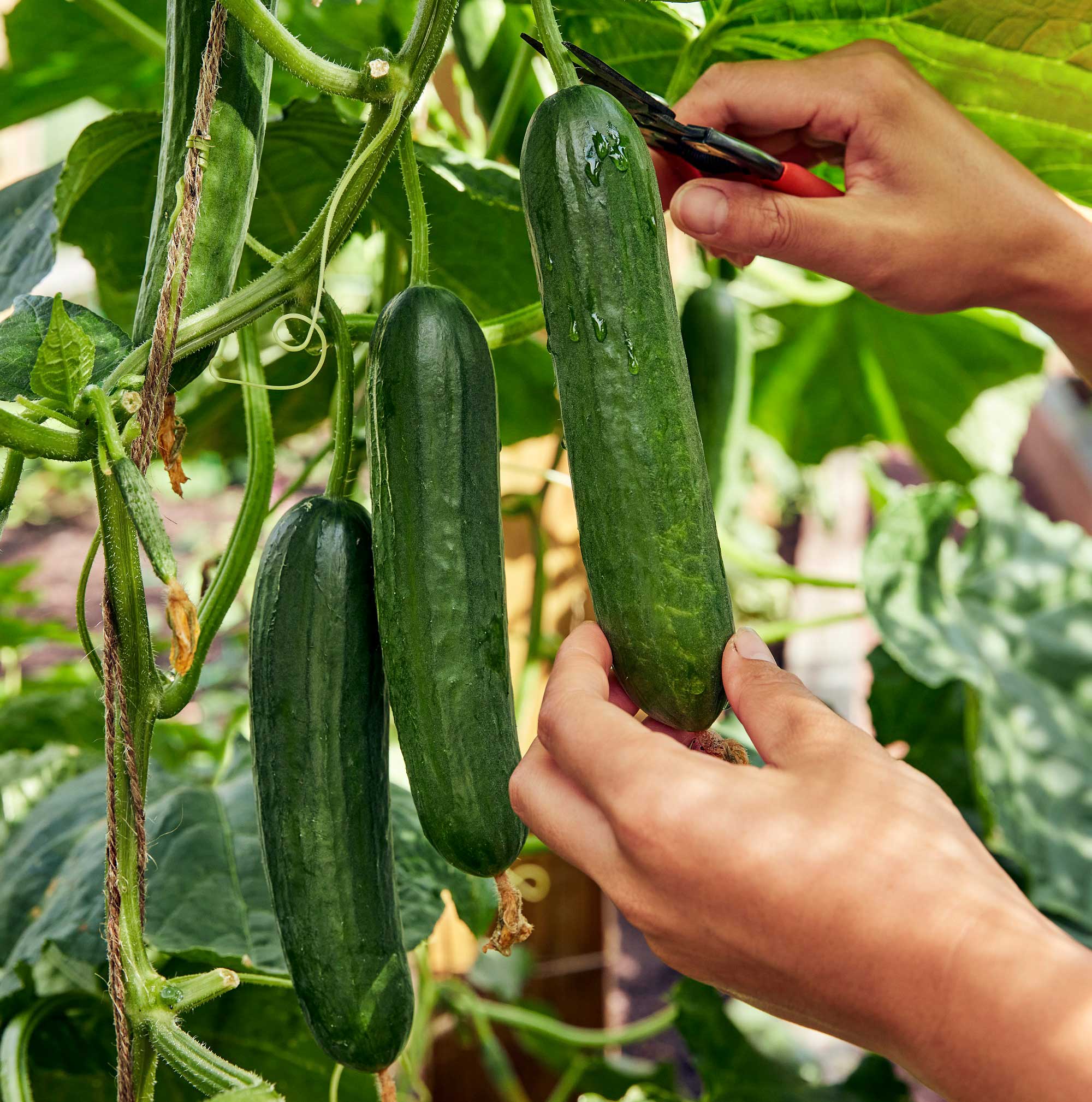
An important aspect of learning how to grow cucumbers is understanding that there are two cucumber varieties.
'"All female" varieties take less upkeep as they only produce the fruit,' explains Matt Jordan gardening expert for The Greenhouse People. 'Most varieties, however, are male and female. The males only produce a flower, while the female flowers produce the cucumber.'
The main difference between growing the two varieties is you will sometimes need to pinch out the male flowers to prevent them from pollinating the female fruits.
'There are almost 100 different varieties of cucumbers, so choosing which ones to grow can be a minefield. Varieties such as 'Picolino' and 'Cucumber Goblin' are smaller than more popular varieties, but they provide higher yields throughout the season and are perfect for snacking on,' advises Daniel..
How to grow cucumbers indoors step-by-step
1. Prepare seed trays or small pots
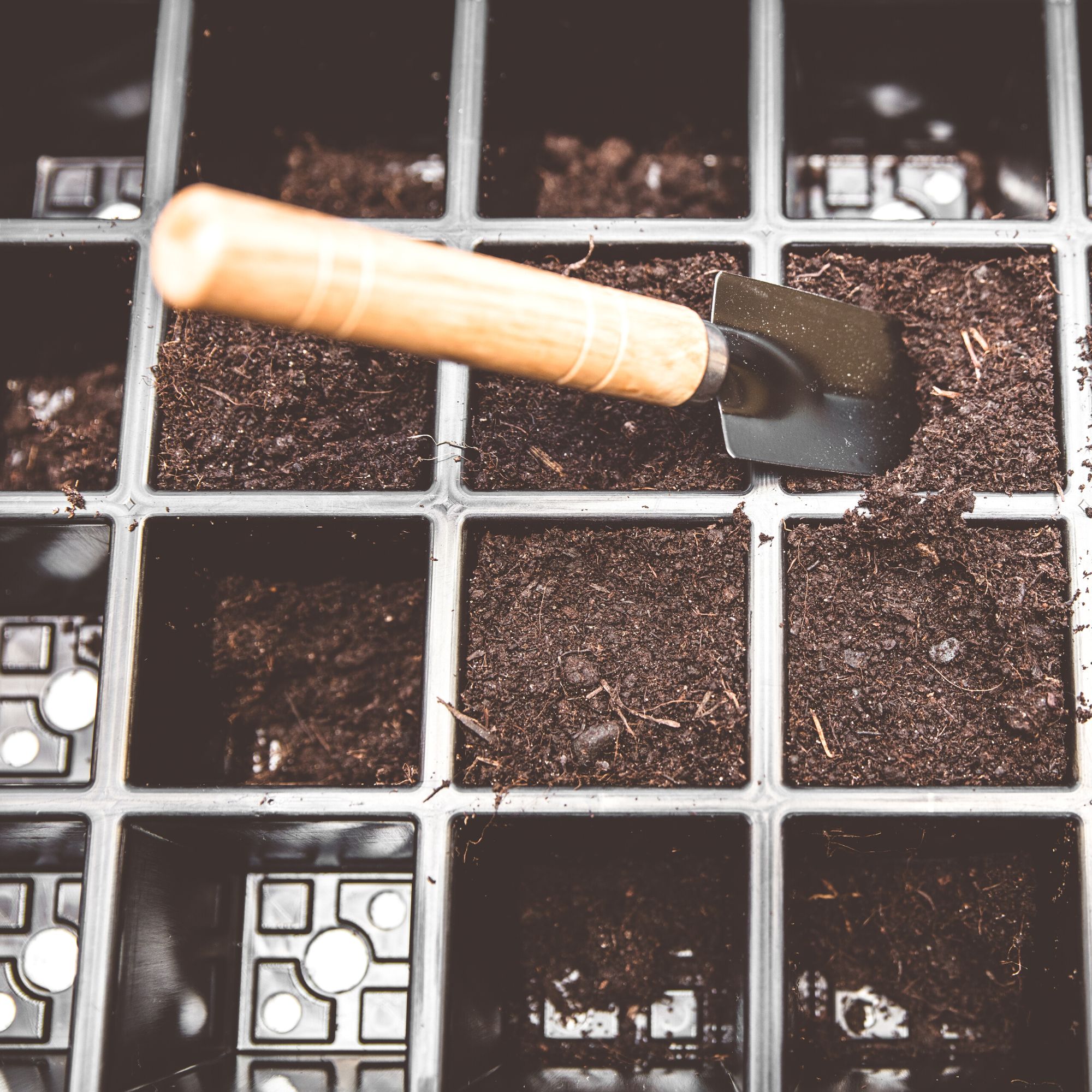
'Start by filling your small pots or trays with compost, water it, and then leave it to drain,' explains Daniel Carruthers.
'As with any plant, cucumbers need good soil to thrive. Use a high-quality potting mix that is well-draining and has a balanced nutrient profile,' adds Matt Jordan.
2. Sow cucumber seeds
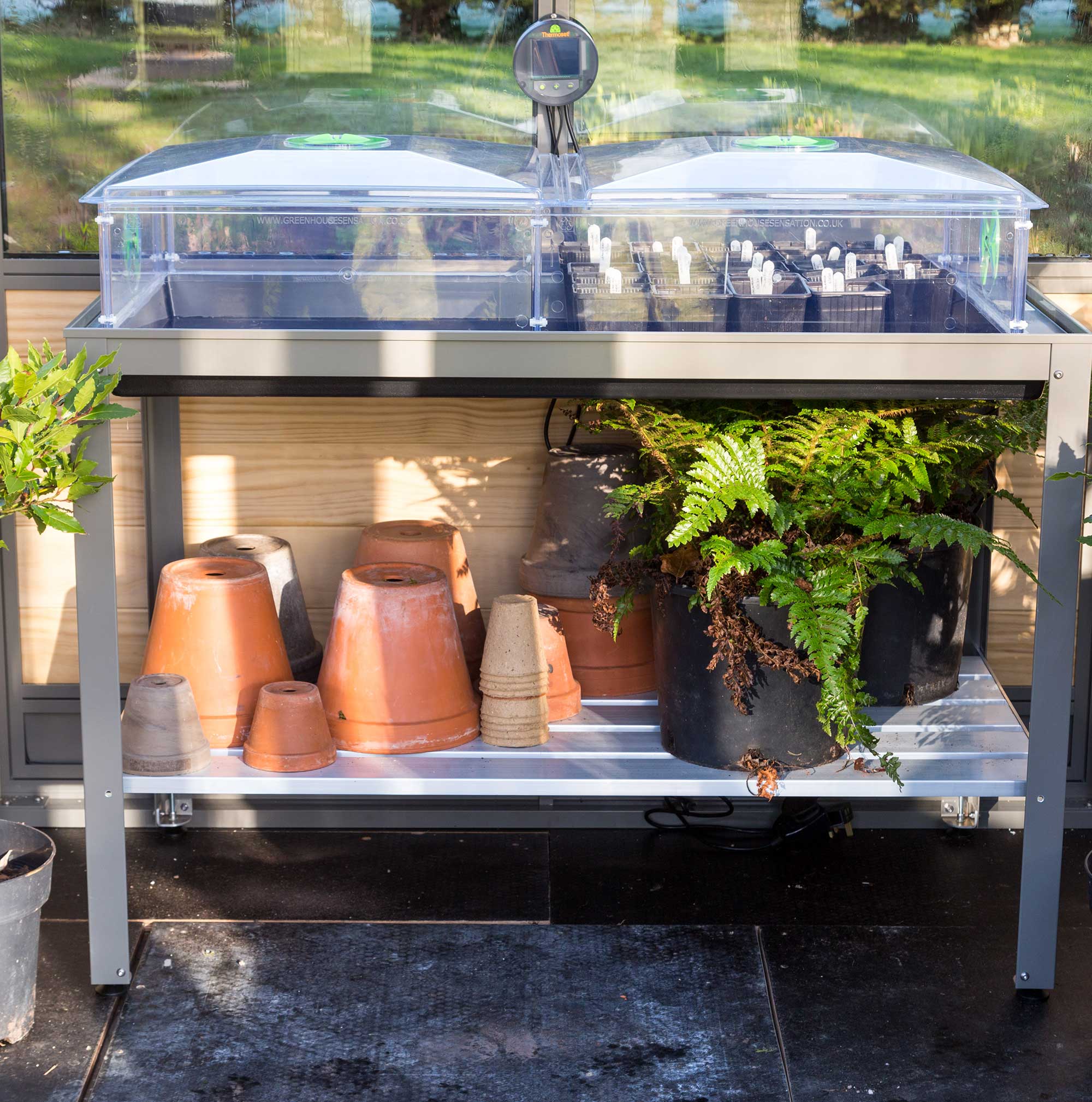
'Growing cucumbers in a heated greenhouse is a surefire way to achieve excellent harvests,' confirms Rob Smith, product development manager at vegetable seed suppliers, Suttons.
If you are growing cucumbers in a heated greenhouse or in a heated propagator, 'sow the seeds between February and May individually in 7.5cm pots or spaced 2.5cm apart in seed trays. A growing temperature of 15°C is necessary for ordinary varieties and 21°C for the ‘all female’ types,' explains Rob Smith.
'When sowing in 7.5cm pots, try filling the pots halfway at sowing time, then add more compost as the young plants grow. This avoids the root disturbance caused by re-potting, while also encouraging healthy growth.
'If you intend to grow cucumbers in an unheated greenhouse, you should delay sowing until April or May when conditions are warmer. It may even be preferable to use plants raised in heat and plant them out in April or May in the cold greenhouse,' adds Rob.
If you don't have a heated greenhouse or propagator, you can put the trays or pots of newly sown seeds inside a polythene bag, and place them in a sunny spot in your greenhouse or on a warm windowsill.

Rob is development manager for Suttons, and a passionate vegetable gardener and writer.
'Sow your seeds on edge – not flat – to prevent rotting, and they should be 1.5cm deep,' adds Craig Wilson a gardening expert with Gardeners Dream.
'For cold greenhouse plantings, we recommend cucumber ‘Merlin’ or ‘Party Time’. Both varieties are ‘all-female’ and produce fruit prolifically over a long season. Try sowing now and again in about four weeks so you have a good succession of cucumbers all summer long,' says Andrew Mellowes of Burpee Europe.
3. provide ample light and warmth
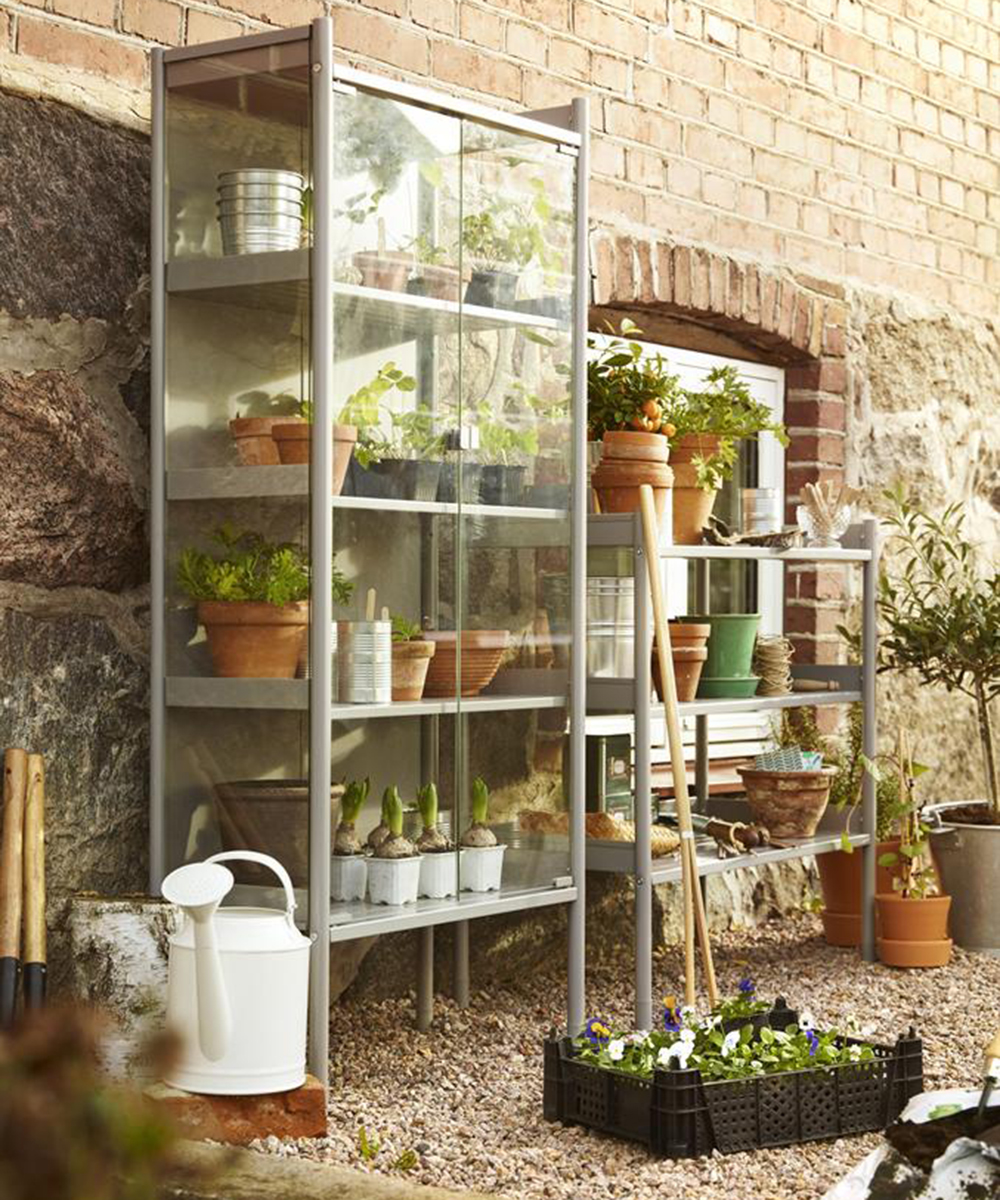
Growing cucumbers need plenty of light to produce fruit.
'Ensure you place seed trays or pots in a south-facing greenhouse or room, to best capture the sun’s light and warmth. Use grow lights if necessary to supplement natural light, and ensure that the temperature in the greenhouse, or room, stays between 15 and 23°C,' says Matt Jordan.
4. Prick out seedlings

Cucumbers will germinate quite quickly. Once you see the growing out of the compost, remove the plastic covering and allow them to continue to grow in a warm place indoors.
'If sowing into boxes or trays, the cucumber seedlings should be pricked out into 7.5cm pots after 7-8 days. Plant them fairly deep, with the seedling’s leaves almost touching the soil surface – this stops young plants from becoming leggy. Avoid completely filling the pot with compost so you can top-up as the stem grows,' says Rob Smith of Suttons.
5. Plant out or pot on
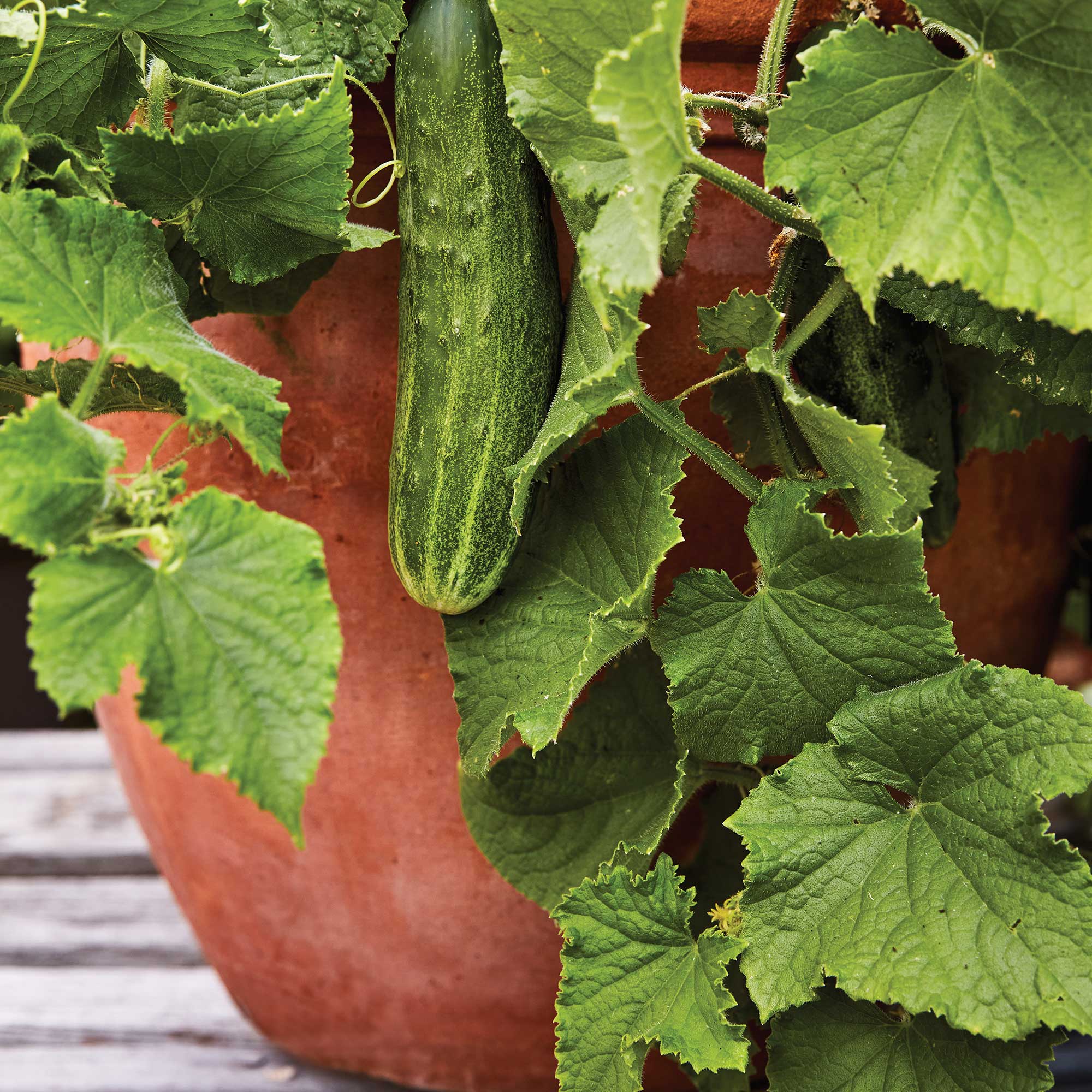
'Your seedlings will be ready to be potted on or transplanted into a larger container when they are at least three inches tall and have their first two to three true leaves, which are the second set of leaves that appear,' explains Daniel Carruthers.
Plant two cucumber plants per grow bag or plant individually into 25cm pots using good quality compost.
'Plant the "all female" hybrids into their final growing positions a little earlier than you would with normal varieties. These cucumbers are inclined to produce fruit very early and if you don’t plant them out soon enough, their growth will be restricted,' adds Rob Smith.
6. Water and fertilise regularly
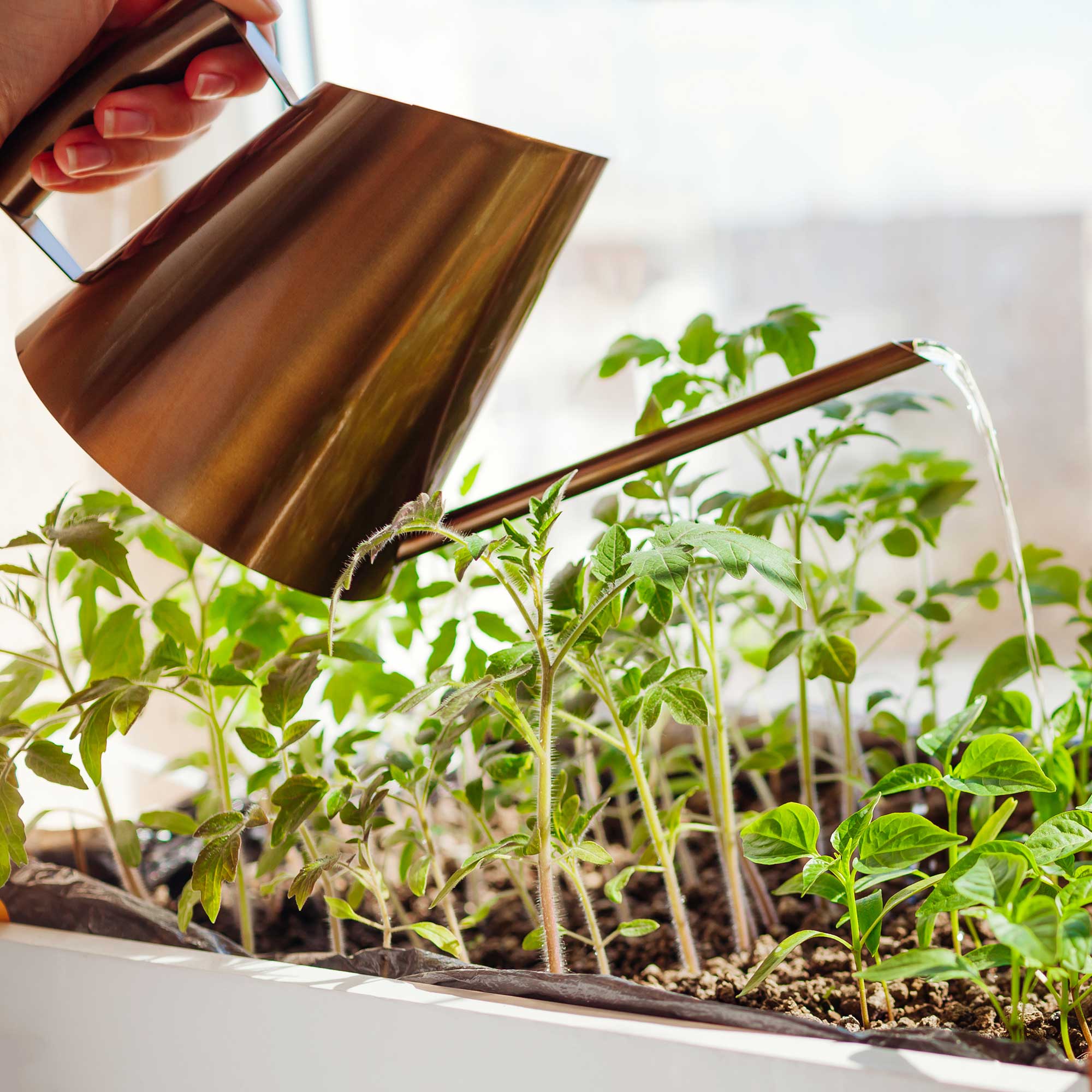
'Cucumbers are heavy feeders and require regular watering and fertilisation to thrive. Water your plants deeply and consistently, being careful not to overwater, as this can lead to root rot. Fertilise regularly with a balanced fertiliser that is high in nitrogen, phosphorus, and potassium,' advises Matt Jordan from The Greenhouse People.
7. Train cucumber plants up supports

Cucumbers are members of the melon and watermelon family and are vining plants that grow upwards, so they will require support to grow.
Use trellises, stakes, or cages to help keep your plants upright and promote good air circulation.
8. Remove male flowers
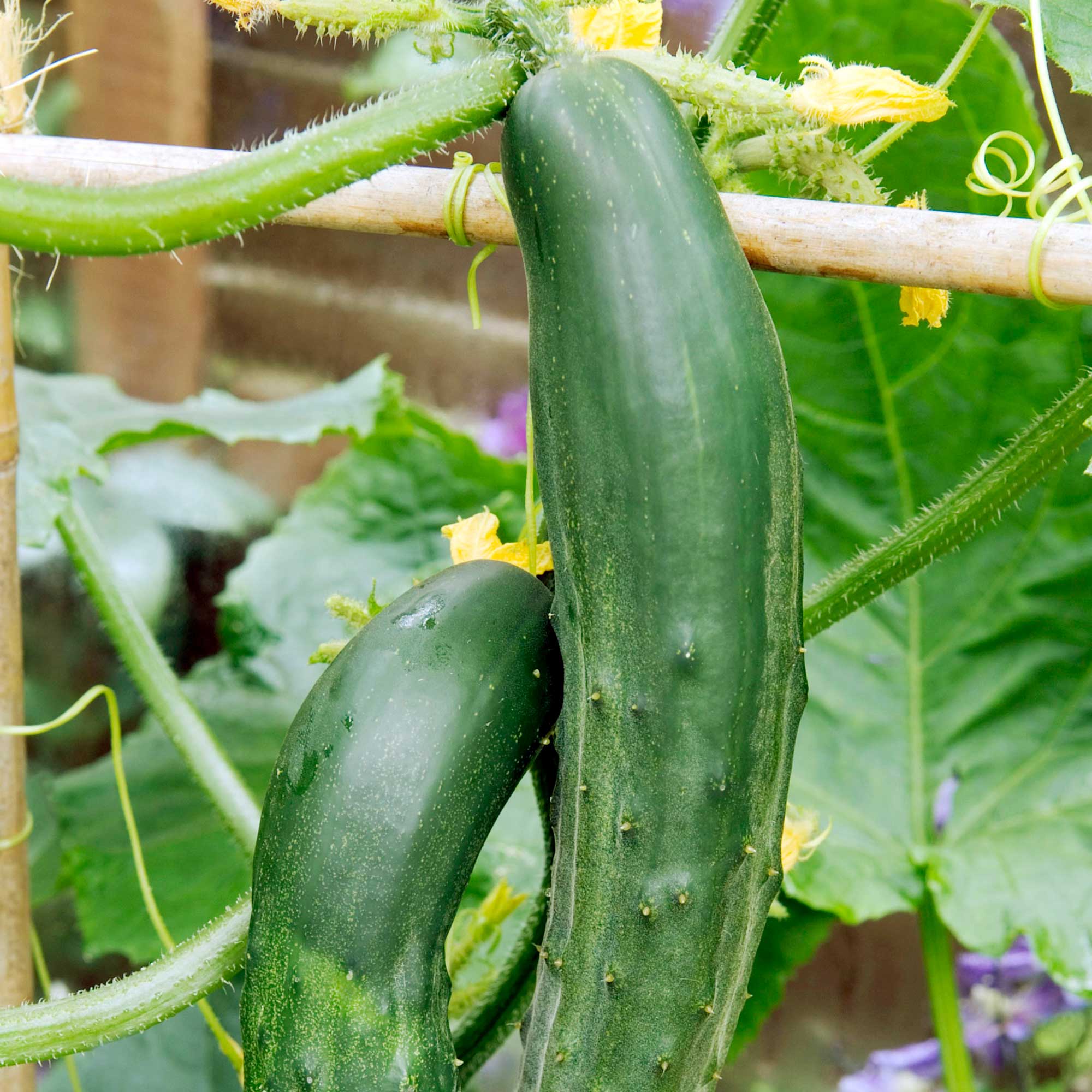
'Male flowers can be spotted by the lack of growing fruit and should be removed immediately, otherwise, your cucumbers will taste bitter,' explains Craig Wilson of Gardeners Dream.
'Check even if you are using an all-female variety, as male cucumbers can still appear under stress conditions,' he adds, such as if the temperature gets too high or too low, unbalanced feeding, or incorrect irrigation.
'It’s easy to tell the difference between male and female flowers – females have swelling just below the base of the flower which develops into fruit; males don’t,' adds Rob Smith.
9. Pinch out side shoots
'It’s important to have plants with a strong root system to stimulate the vegetative growth.
'Pinch out the tips of side shoots in the early stages of growth, just at the top of the shoots, two leaves beyond a female flower,' says Rob Smith.
This is especially the case for 'all female' varieties of cucumber plants.
10. Check for pests and diseases
'Cucumbers are susceptible to a variety of pests and diseases, so it's important to keep a watchful eye on your plants and act if you notice any problems. Common cucumber pests include aphids, spider mites, and cucumber beetles, while common diseases include powdery mildew and downy mildew, ' explains Matt Jordan.
11. Harvest the fruits
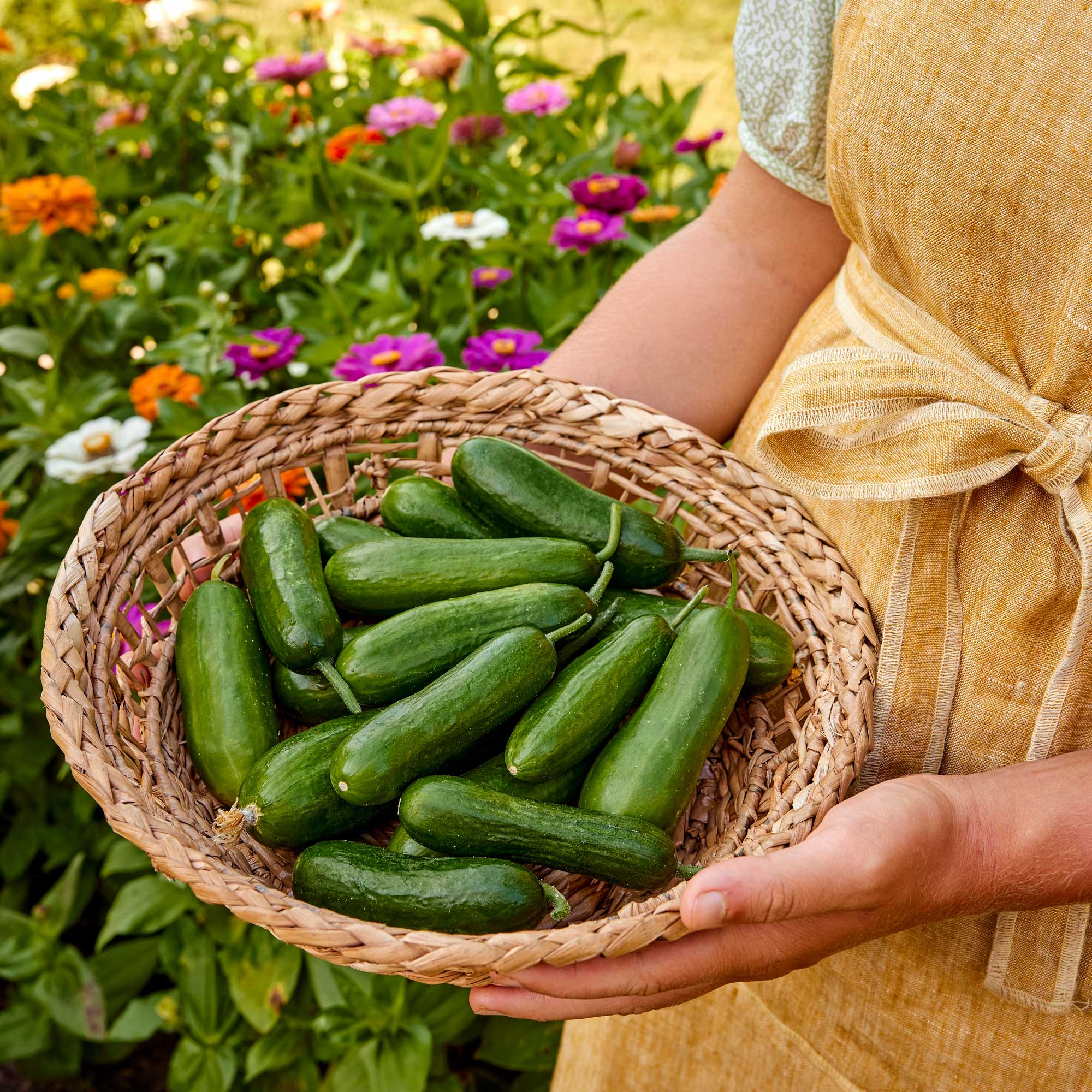
By choosing the right variety, providing ample light and warmth, and taking good care of your plants, you can enjoy a bountiful harvest of crisp, juicy cucumbers.
'Harvest from July to September. Cut when fruits are around 15-20cm long, and harvest regularly to encourage more fruits,' advises Craig Wilson.
How to grow cucumbers outdoors
Outdoor cucumbers can be grown in a sunny, sheltered spot in your garden from May or June – depending on the temperature.
If you’re growing cucumbers outside, make sure you choose an outdoor variety; they’re usually more ridged and bumpier than the smooth greenhouse types.
'You can sow cucumber seeds directly into a prepared bed or container in May, but if you want to get a head start, you can sow them in a greenhouse or cold frame in mid-April and then plant them out in May when the danger of frost has passed. It may be necessary to protect young plants with a cloche or horticultural fleece during cooler weather,' explains Rob Smith.
Follow the same instructions in terms of watering, fertilising and pinching out as for indoor grow plants.
'For outdoor plants in the soil or a large patio container, we would recommend ‘Bush Champion’ or for a gherkin ‘Goblin’,' says Andrew Mellowes of Burpee.
Growing cucumbers FAQ
How long do cucumbers take to grow?
Cucumbers take about 50 to 70 days to grow from seed until the fruits are ready to harvest. They are quick and easy to grow – germination takes 6 to 9 days, and before long, you’ll be eating fresh cucumbers through the summer months.
What is the best way to grow cucumbers?
Cucumbers like warm conditions, so the best way to grow them is indoors, in a greenhouse or by a sunny window.
That said, with a little planning and attention to detail, cucumbers are very easy to grow outside, too – as long as they enjoy a warm and sheltered spot.

Rachel Crow is the editor of Period Living Magazine and a senior content editor, contributing homes and garden content for idealhome.co.uk. She has written for lifestyle magazines for many years, with a particular focus on historic houses, interiors, arts and crafts, and gardening. Rachel started her journalism career on BBC radio, before moving into lifestyle magazines as a freelance writer and editor. She worked on The English Home and The English Garden magazines before joining the Period Living team as features editor and then deputy editor. She was garden editor for Homes & Gardens magazine and homesandgardens.com and contributed articles to Country Homes & Interiors.